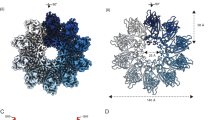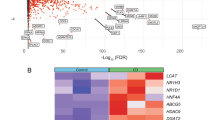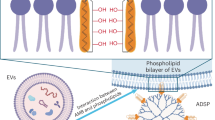Abstract
Aim:
Seipin is a protein that resides in endoplasmic reticulum, and involved in both lipid metabolic disorders and motor neuropathy. The aim of this study was to investigate the effects of mutant seipin on autophagy system and the morphology of lipid droplets in vitro.
Methods:
HEK-293, H1299 and MES23.5 cells were transfected with the plasmids of mutated seipin at glycosylation sites (N88S or S90L) and GFP-LC3 plasmids. The cells were subjected to immunofluorescence and flow cytometry assays, and the cell lysates were subjected to immunoblot analysis. Nile Red was used to stain the lipid droplets in the cells.
Results:
Overexpression of the mutated seipin proteins N88S or S90L activated autophagy in the 3 cell lines, and substantially altered the sub-cellular distribution of the autophagosome marker GFP-LC3, leading to a number of large vacuoles appearing in the cytoplasm. The sub-cellular location of GFP-LC3 and mutated seipin proteins highly overlapped. Moreover, and the mutated seipin proteins caused diffuse small lipid droplets to fuse into larger lipid droplets. Treatment of mutated seipin-transfected cells with the autophagy inhibitor 3-MA (5 mmol/L) facilitated the fusion of mutated seipin-induced large vacuoles. The protein glycosylation inhibitor tunicamycin could mimic the mutated seipin-induced effects, and treatment of the wild-type seipin-transfected cells with tunicamycin (2.5 μg/mL) produced similar morphological and biochemical properties as in the mutated seipin-transfected cells.
Conclusion:
The mutation of seipin at glycosylation sites disrupt its function in regulating lipid droplet metabolism, and the autophagy acts as an adaptive response to break down abnormal lipid droplets. The interruption of autophagy would accelerate the fusion of abnormal lipid droplets.
Similar content being viewed by others
Log in or create a free account to read this content
Gain free access to this article, as well as selected content from this journal and more on nature.com
or
References
Ito D, Suzuki N . Seipinopathy: a novel endoplasmic reticulum stress-associated disease. Brain 2008; 132: 8–15.
Chen W, Yechoor VK, Chang BH, Li MV, March KL, Chan L . The human lipodystrophy gene product Berardinelli-Seip congenital lipodystrophy 2/seipin plays a key role in adipocyte differentiation. Endocrinology 2009; 150: 4552–61.
Cui X, Wang Y, Tang Y, Liu Y, Zhao L, Deng J, et al. Seipin ablation in mice results in severe generalized lipodystrophy. Human Mol Genet 2011; 20: 3022–30.
Agarwal AK, Garg A . Seipin: a mysterious protein. Trends Mol Med 2004; 10: 440–4.
Windpassinger C, Auer-Grumbach M, Irobi J, Patel H, Petek E, Hörl G, et al. Heterozygous missense mutations in BSCL2 are associated with distal hereditary motor neuropathy and Silver syndrome. Nat Genet 2004; 36: 271–6.
Ito D, Fujisawa T, Iida H, Suzuki N . Characterization of seipin/BSCL2, a protein associated with spastic paraplegia 17. Neurobiol Dis 2008; 31: 266–77.
Fei W, Du X, Yang H . Seipin, adipogenesis and lipid droplets. Trends Endocrinol Metab 2011; 22: 204–10.
Ashrafi K, Tian Y, Bi J, Shui G, Liu Z, Xiang Y, et al. Tissue-autonomous function of Drosophila Seipin in preventing ectopic lipid Droplet formation. PLoS Genet 2011; 7: e1001364.
Martin S, Parton RG . Lipid droplets: a unified view of a dynamic organelle. Nat Rev Mol Cell Biol 2006; 7: 373–8.
Farese RV Jr, Walther TC . Lipid droplets finally get a little R-E-S-P-E-C-T. Cell 2009; 139: 855–60.
Singh R, Kaushik S, Wang Y, Xiang Y, Novak I, Komatsu M, et al. Autophagy regulates lipid metabolism. Nature 2009; 458: 1131–5.
Yang H, Galea A, Sytnyk V, Crossley M . Controlling the size of lipid droplets: lipid and protein factors. Curr Opin Cell Biol 2012; 24: 509–16.
Binns D, Lee S, Hilton CL, Jiang QX, Goodman JM . Seipin is a discrete homooligomer. Biochemistry 2010; 49: 10747–55.
Fei W, Shui G, Gaeta B, Du X, Kuerschner L, Li P, et al. Fld1p, a functional homologue of human seipin, regulates the size of lipid droplets in yeast. J Cell Biol 2008; 180: 473–82.
Fei W, Li H, Shui G, Kapterian TS, Bielby C, Du X, et al. Molecular characterization of seipin and its mutants: implications for seipin in triacylglycerol synthesis. J Lipid Res 2011; 52: 2136–47.
Singh R . Autophagy and regulation of lipid metabolism. Results Probl Cell Differ 2010; 52: 35–46.
Shibata M, Yoshimura K, Tamura H, Ueno T, Nishimura T, Inoue T, et al. LC3, a microtubule-associated protein1A/B light chain3, is involved in cytoplasmic lipid droplet formation. Biochem Biophys Res Commun 2010; 393: 274–9.
Shibata M, Yoshimura K, Furuya N, Koike M, Ueno T, Komatsu M, et al. The MAP1-LC3 conjugation system is involved in lipid droplet formation. Biochem Biophys Res Commun 2009; 382: 419–23.
Dong H, Czaja MJ . Regulation of lipid droplets by autophagy. Trends Endocrinol Metab 2011; 22: 234–40.
Yagi T, Ito D, Nihei Y, Ishihara T, Suzuki N . N88S seipin mutant transgenic mice develop features of seipinopathy/BSCL2-related motor neuron disease via endoplasmic reticulum stress. Human Mol Genet 2011; 20: 3831–40.
Ashrafi K, Fei W, Shui G, Zhang Y, Krahmer N, Ferguson C, et al. A role for phosphatidic acid in the formation of “Supersized” lipid Droplets. PLoS Genet 2011; 7: e1002201.
Kouroku Y, Fujita E, Tanida I, Ueno T, Isoai A, Kumagai H, et al. ER stress (PERK/eIF2alpha phosphorylation) mediates the polyglutamine-induced LC3 conversion, an essential step for autophagy formation. Cell Death Differ 2007; 14: 230–9.
Acknowledgements
This work was supported by the National Basic Research Program of China (No 2014CB932002), the CAS Strategic Priority Research Program (No XDB14030502), the CAS/SAFEA International Partnership Program for Creative Research Teams, and the National Natural Science Foundation of China (No 81273004, 31470829, 20977093, and 10935009). We thank Professor Daisuke ITO from Keio University (Japan) for providing the seipin plasmids.
Author information
Authors and Affiliations
Corresponding author
Rights and permissions
About this article
Cite this article
Fan, Hd., Chen, Sp., Sun, Yx. et al. Seipin mutation at glycosylation sites activates autophagy in transfected cells via abnormal large lipid droplets generation. Acta Pharmacol Sin 36, 497–506 (2015). https://doi.org/10.1038/aps.2014.164
Received:
Accepted:
Published:
Issue date:
DOI: https://doi.org/10.1038/aps.2014.164
Keywords
This article is cited by
-
miR-27b targets MAIP1 to mediate lipid accumulation in cultured human and mouse hepatic cells
Communications Biology (2023)



